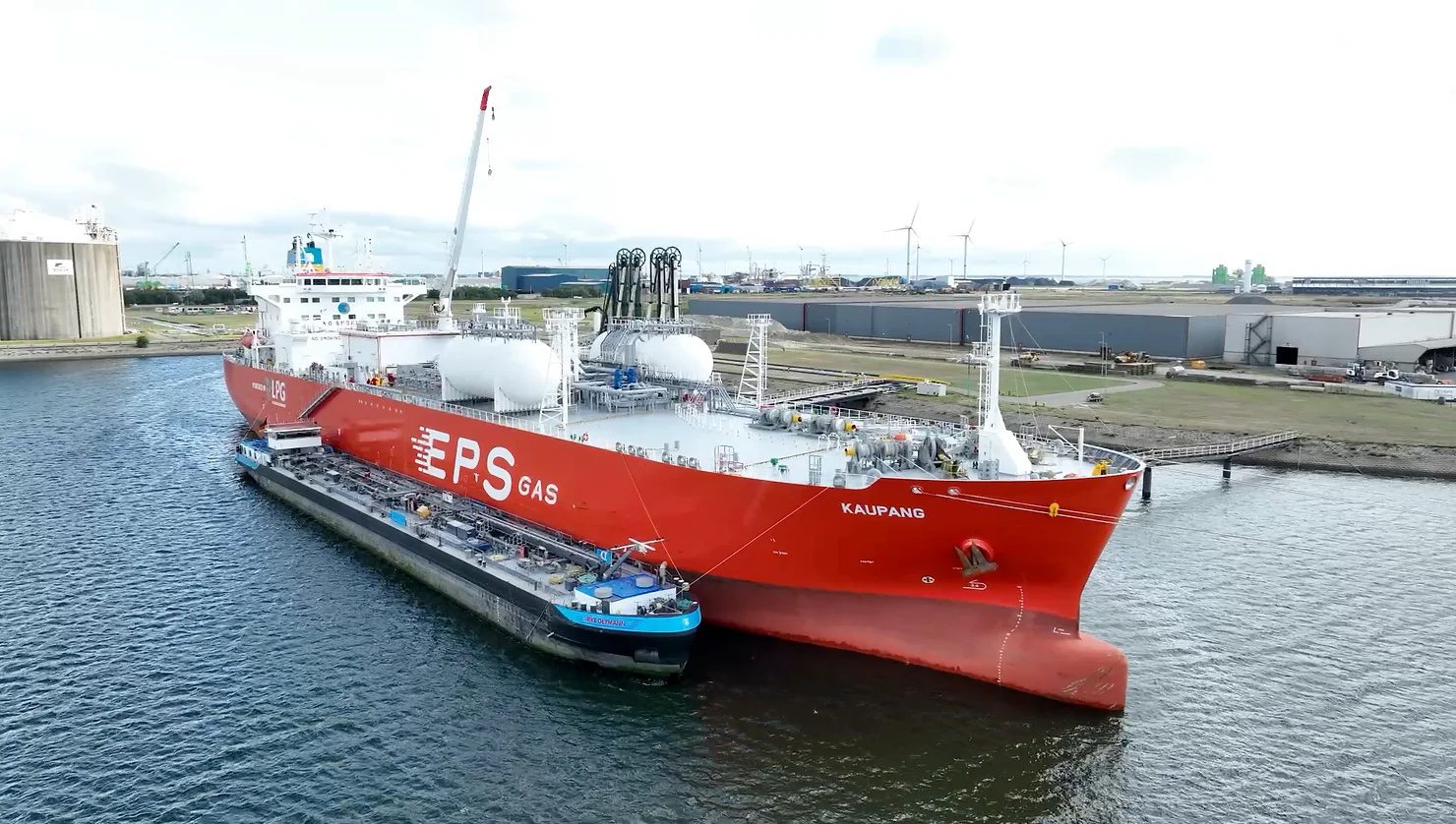Advancing Maritime Decarbonization: Latest Successful Biofuel Trial in Green Fuel Supply Chain
Advancing Maritime Decarbonization: Latest Successful Biofuel Trial in Green Fuel Supply Chain gCaptain


The Global Centre for Maritime Decarbonisation (GCMD) Announces Successful Biofuel Supply Chain Trial

The Global Centre for Maritime Decarbonisation (GCMD) has recently conducted a successful biofuel supply chain trial as part of its pilot program aimed at developing an assurance framework for drop-in green fuels. The framework focuses on ensuring quality, quantity, and greenhouse gas abatement in the use of biofuels.
Biofuel Blend for LPG Propulsion in Gas Carrier
In this trial, a biofuel blend consisting of hydrotreated vegetable oil (HVO) and marine gas oil (MGO) was used as pilot fuel for LPG propulsion in a mid-sized gas carrier equipped with an LPG dual-fuel engine. This blend has the potential to reduce emissions compared to conventional fuel oil. The gas carrier, named Kaupang, was provided by Eastern Pacific Shipping (EPS).
Bunkering and Quality Assessment
A total of approximately 200 MT of the B30 biofuel blend was provided by GoodFuels and bunkered in the Port of Vlissingen (Flushing), Netherlands. To ensure the authenticity and quantity of the biofuel blend, a tracer was added to the HVO. Veritas Petroleum Services (VPS) conducted extensive laboratory tests on samples collected at various points along the supply chain to assess the quality of the biofuel and biofuel blend.
Significant Reduction in Emissions
The HVO used in this trial has a well-to-wake emissions of 16 gCO2e/MJ, resulting in an 83% reduction in emissions compared to using fossil MGO. The trial also demonstrated a 20% net reduction in emissions compared to the Kaupang sailing on VLSFO.
Supporting Sustainable Development Goals
The Global Centre for Maritime Decarbonisation (GCMD) is committed to supporting the Sustainable Development Goals (SDGs) set by the United Nations. Through this pilot program, GCMD aims to develop an assurance framework that enables ships to meet the recently revised IMO indicative decarbonisation checkpoint for 2030.
Interim Guidance on Biofuels
New interim guidance on the use of biofuels under MARPOL will come into effect in October. This guidance provides clarity on the types of biofuels that can be certified as sustainable and requires a minimum of 65% emissions reduction against conventional fuel for compliance.
Future Trials and Reporting
The remaining two supply chains of the biofuels assurance framework pilot led by GCMD will be trialled in the coming months. A public report detailing the assurance framework and trial learnings will be released in early 2024.
Importance of Transparency in the Bunker Industry
Johannes Schürmann, Commercial Director at GoodFuels, emphasizes the importance of transparency in the bunker industry, especially as sustainable marine fuels are being introduced to the market. Reliable technical insights and sustainability guarantees throughout the supply chain are crucial for the successful adoption of these new generation fuels.
About the Global Centre for Maritime Decarbonisation (GCMD)
The Global Centre for Maritime Decarbonisation (GCMD) was established in Singapore with funding from the Maritime and Port Authority of Singapore and six founding partners. GCMD aims to support the decarbonisation of the maritime industry and is conducting three trials focused on ammonia bunkering safety, drop-in biofuels, and shipboard carbon capture to help the industry meet or exceed the International Maritime Organization’s goals for 2030 and 2050.
Sign up for our newsletter
SDGs, Targets, and Indicators Analysis
1. Which SDGs are addressed or connected to the issues highlighted in the article?
- SDG 7: Affordable and Clean Energy
- SDG 9: Industry, Innovation, and Infrastructure
- SDG 13: Climate Action
- SDG 14: Life Below Water
- SDG 17: Partnerships for the Goals
The article discusses the use of biofuel blends as a means to reduce emissions in the maritime industry. This aligns with SDG 7, which focuses on ensuring access to affordable, reliable, sustainable, and modern energy for all. Additionally, the development of a quality, quantity, and greenhouse gas abatement assurance framework for drop-in green fuels supports SDG 9, which aims to build resilient infrastructure, promote inclusive and sustainable industrialization, and foster innovation. The reduction in emissions contributes to SDG 13’s goal of combating climate change. The article also mentions the use of biofuels to meet the International Maritime Organization’s decarbonization goals, which relates to SDG 14’s objective of conserving and sustainably using the oceans, seas, and marine resources. Finally, the establishment of the Global Centre for Maritime Decarbonisation (GCMD) and its partnerships align with SDG 17’s focus on strengthening global partnerships for sustainable development.
2. What specific targets under those SDGs can be identified based on the article’s content?
- SDG 7.2: Increase substantially the share of renewable energy in the global energy mix.
- SDG 9.4: Upgrade infrastructure and retrofit industries to make them sustainable, with increased resource-use efficiency and greater adoption of clean and environmentally sound technologies and industrial processes.
- SDG 13.2: Integrate climate change measures into national policies, strategies, and planning.
- SDG 14.2: Sustainably manage and protect marine and coastal ecosystems to avoid significant adverse impacts.
- SDG 17.16: Enhance the global partnership for sustainable development, complemented by multi-stakeholder partnerships that mobilize and share knowledge, expertise, technology, and financial resources.
Based on the article’s content, the targets identified include increasing the share of renewable energy in the global energy mix (SDG 7.2), upgrading infrastructure and retrofitting industries for sustainability (SDG 9.4), integrating climate change measures into national policies (SDG 13.2), sustainably managing and protecting marine and coastal ecosystems (SDG 14.2), and enhancing global partnerships for sustainable development (SDG 17.16).
3. Are there any indicators mentioned or implied in the article that can be used to measure progress towards the identified targets?
- Percentage of renewable energy in the global energy mix
- Investment in sustainable infrastructure and clean technologies
- Number of policies and plans integrating climate change measures
- Extent of marine and coastal ecosystem protection
- Number of partnerships for sustainable development
While the article does not explicitly mention specific indicators, progress towards the identified targets can be measured using indicators such as the percentage of renewable energy in the global energy mix, investment in sustainable infrastructure and clean technologies, the number of policies and plans integrating climate change measures, the extent of marine and coastal ecosystem protection, and the number of partnerships for sustainable development.
SDGs, Targets, and Indicators Table
| SDGs | Targets | Indicators |
|---|---|---|
| SDG 7: Affordable and Clean Energy | Increase substantially the share of renewable energy in the global energy mix (7.2) | Percentage of renewable energy in the global energy mix |
| SDG 9: Industry, Innovation, and Infrastructure | Upgrade infrastructure and retrofit industries to make them sustainable, with increased resource-use efficiency and greater adoption of clean and environmentally sound technologies and industrial processes (9.4) | Investment in sustainable infrastructure and clean technologies |
| SDG 13: Climate Action | Integrate climate change measures into national policies, strategies, and planning (13.2) | Number of policies and plans integrating climate change measures |
| SDG 14: Life Below Water | Sustainably manage and protect marine and coastal ecosystems to avoid significant adverse impacts (14.2) | Extent of marine and coastal ecosystem protection |
| SDG 17: Partnerships for the Goals | Enhance the global partnership for sustainable development, complemented by multi-stakeholder partnerships that mobilize and share knowledge, expertise, technology, and financial resources (17.16) | Number of partnerships for sustainable development |
Behold! This splendid article springs forth from the wellspring of knowledge, shaped by a wondrous proprietary AI technology that delved into a vast ocean of data, illuminating the path towards the Sustainable Development Goals. Remember that all rights are reserved by SDG Investors LLC, empowering us to champion progress together.
Source: gcaptain.com

Join us, as fellow seekers of change, on a transformative journey at https://sdgtalks.ai/welcome, where you can become a member and actively contribute to shaping a brighter future.







